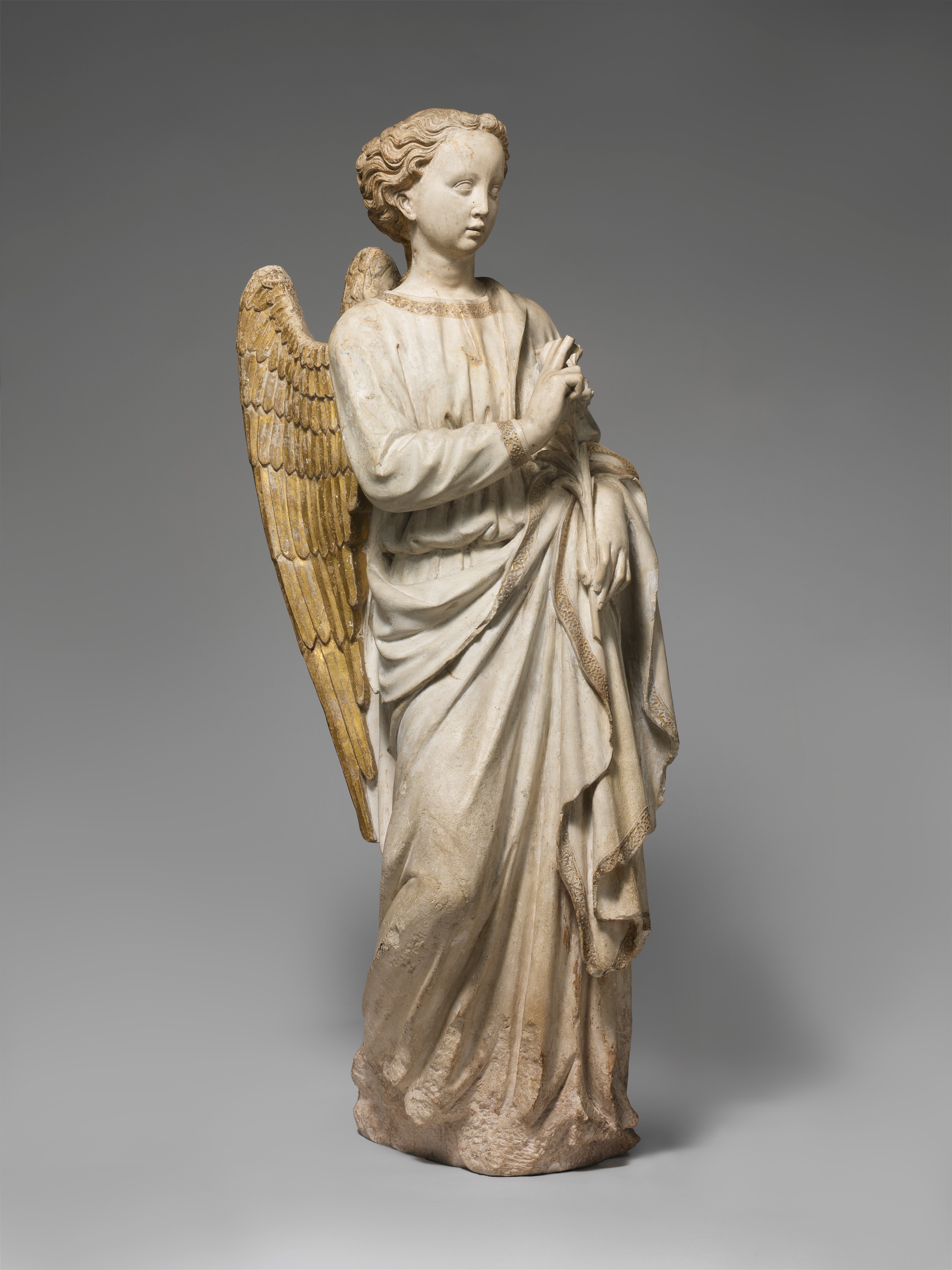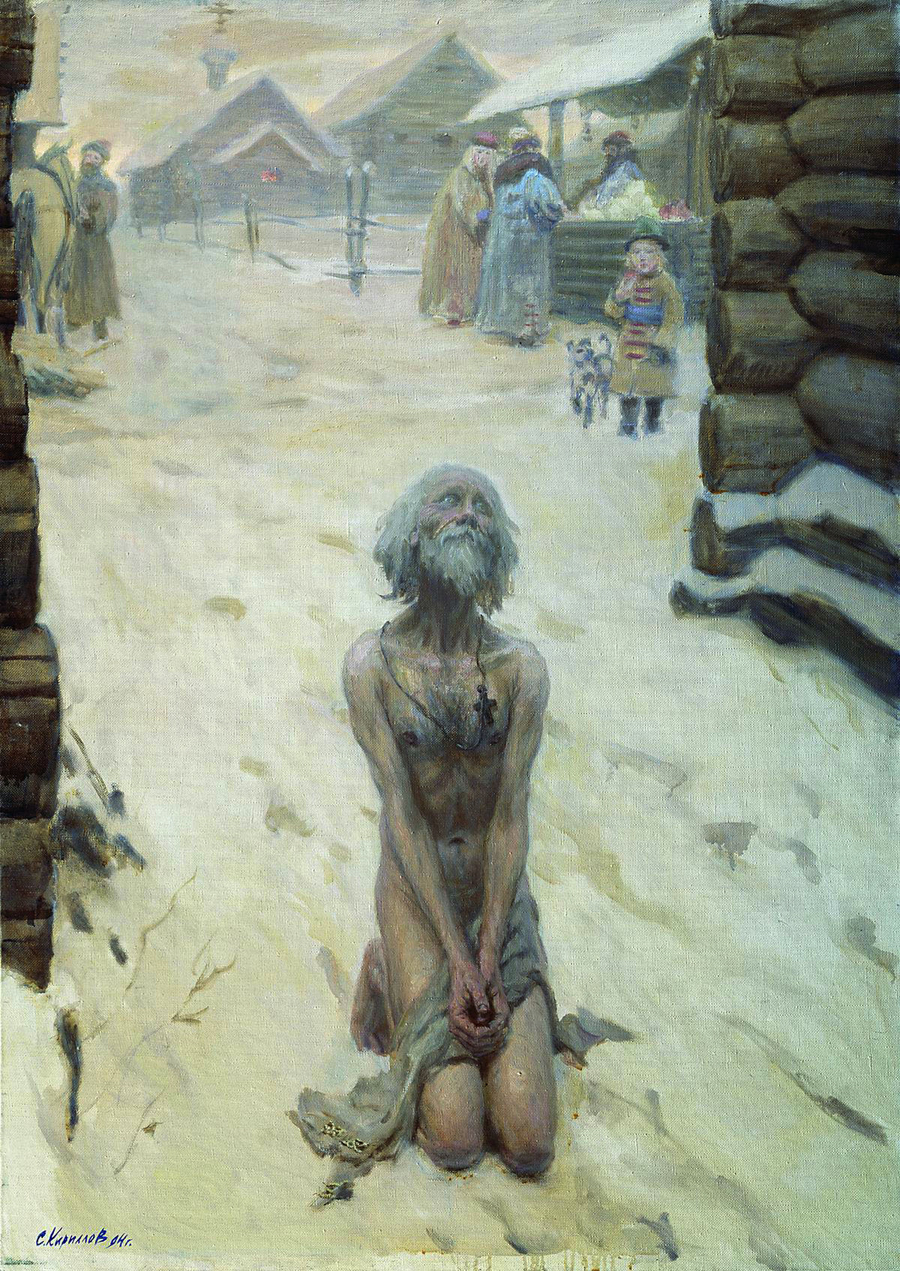|
The Protection
The Intercession of the Theotokos, or the Protection of Our Most Holy Lady Theotokos and Ever-Virgin Mary, is a Christian feast of the Mother of God celebrated in the Eastern Orthodox and Byzantine Catholic Churches on October 14 (Julian calendar: October 1). The feast celebrates the protection afforded the faithful through the intercessions of the Theotokos (''lit.'' Mother of God, one Eastern title of the Virgin Mary). The feast is commemorated in Eastern Orthodoxy as a whole, but by no means as fervently as it is in Russia, Belarus, and, especially, Ukraine. In the Slavic Orthodox Churches it is celebrated as the most important solemnity besides the Twelve Great Feasts and Pascha. In Ukraine, it has a special meaning through its connection to the spirituality of the Ukrainian Cossacks and, accordingly and more recently, to Defenders of Ukraine Day. Etymology The Protection of the Theotokos or the Intercession of the Theotokos (, Pokrov, , Pokrova), like the (, Sképē) has ... [...More Info...] [...Related Items...] OR: [Wikipedia] [Google] [Baidu] |
Icon 02041 Pokrov
An icon () is a religious work of art, most commonly a painting, in the cultures of the Eastern Orthodox, Oriental Orthodox, Catholic Church, Catholic, and Lutheranism, Lutheran churches. The most common subjects include Jesus, Mary, mother of Jesus, Mary, saints, and angels. Although especially associated with portrait-style images concentrating on one or two main figures, the term also covers most of the religious images in a variety of artistic media produced by Eastern Christianity, including narrative scenes, usually from the Bible or the lives of saints. Icons are most commonly painted on wood panels with egg tempera, but they may also be cast in metal or carved in stone or embroidered on cloth or done in mosaic or fresco work or printed on paper or metal, etc. Comparable images from Western Christianity may be classified as "icons", although "iconic" may also be used to describe the static style of a devotional image. In the Greek language, the term for icon painting uses ... [...More Info...] [...Related Items...] OR: [Wikipedia] [Google] [Baidu] |
Primary Chronicle
The ''Primary Chronicle'', shortened from the common ''Russian Primary Chronicle'' (, commonly transcribed ''Povest' vremennykh let'' (PVL), ), is a Rus' chronicle, chronicle of Kievan Rus' from about 850 to 1110. It is believed to have been originally compiled in or near Kiev in the 1110s. Tradition ascribed its compilation to the monk Nestor the Chronicler, Nestor (''Nestor's Chronicle'') beginning in the 12th century, but this is no longer believed to have been the case. The title of the work, ("Tale of Bygone Years") comes from the opening sentence of the Laurentian Codex, ''Laurentian'' text: "These are the narratives of bygone years regarding the origin of the land of Rus', the first princes of Kiev, and from what source the land of Rus' had its beginning". The work is considered a fundamental source for the earliest history of the East Slavs. The content of the chronicle is known today from the several surviving versions and codices, revised over the years, slightly var ... [...More Info...] [...Related Items...] OR: [Wikipedia] [Google] [Baidu] |
Jesus Christ
Jesus (AD 30 or 33), also referred to as Jesus Christ, Jesus of Nazareth, and many Names and titles of Jesus in the New Testament, other names and titles, was a 1st-century Jewish preacher and religious leader. He is the Jesus in Christianity, central figure of Christianity, the Major religious groups, world's largest religion. Most Christians consider Jesus to be the Incarnation (Christianity), incarnation of God the Son and awaited Messiah#Christianity, messiah, or Christ (title), Christ, a descendant from the Davidic line that is prophesied in the Old Testament. Virtually all modern scholars of classical antiquity, antiquity agree that Historicity of Jesus, Jesus existed historically. Accounts of Life of Jesus, Jesus's life are contained in the Gospels, especially the four canonical Gospels in the New Testament. Since the Age of Enlightenment, Enlightenment, Quest for the historical Jesus, academic research has yielded various views on the historical reliability of t ... [...More Info...] [...Related Items...] OR: [Wikipedia] [Google] [Baidu] |
Saint
In Christianity, Christian belief, a saint is a person who is recognized as having an exceptional degree of sanctification in Christianity, holiness, imitation of God, likeness, or closeness to God in Christianity, God. However, the use of the term ''saint'' depends on the context and Christian denomination, denomination. In Anglican Communion, Anglican, Oriental Orthodox, and Lutheranism, Lutheran doctrine, all of their faithful deceased in Heaven are considered to be saints, but a selected few are considered worthy of greater honor or emulation. Official Ecclesiastical polity, ecclesiastical recognition, and veneration, is conferred on some denominational saints through the process of canonization in the Catholic Church or glorification in the Eastern Orthodox Church after their approval. In many Protestant denominations, and following from Pauline usage, ''saint'' refers broadly to any holy Christian, without special recognition or selection. While the English word ''saint'' ... [...More Info...] [...Related Items...] OR: [Wikipedia] [Google] [Baidu] |
Angel
An angel is a spiritual (without a physical body), heavenly, or supernatural being, usually humanoid with bird-like wings, often depicted as a messenger or intermediary between God (the transcendent) and humanity (the profane) in various traditions like the Abrahamic religions. Other roles include protectors and guides for humans, such as guardian angels and servants of God. In Western belief-systems the term is often used to distinguish benevolent from malevolent intermediary beings. Emphasizing the distance between God and mankind, revelation-based belief-systems require angels to bridge the gap between the earthly and the transcendent realm. Angels play a lesser role in monistic belief-systems, since the gap is non-existent. However, angelic beings might be conceived as aid to achieve a proper relationship with the divine. Abrahamic religions describe angelic hierarchies, which vary by religion and sect. Some angels have specific names (such as Gabriel or Mich ... [...More Info...] [...Related Items...] OR: [Wikipedia] [Google] [Baidu] |
Slavic People
The Slavs or Slavic people are groups of people who speak Slavic languages. Slavs are geographically distributed throughout the northern parts of Eurasia; they predominantly inhabit Central Europe, Eastern Europe, Southeastern Europe, and Northern Asia, though there is a large Slavic minority scattered across the Baltic states and Central Asia, and a substantial Slavic diaspora in the Americas, Western Europe, and Northern Europe. Early Slavs lived during the Migration Period and the Early Middle Ages (approximately from the 5th to the 10th century AD), and came to control large parts of Central, Eastern, and Southeast Europe between the sixth and seventh centuries. Beginning in the 7th century, they were gradually Christianized. By the 12th century, they formed the core population of a number of medieval Christian states: East Slavs in the Kievan Rus', South Slavs in the Bulgarian Empire, the Principality of Serbia, the Duchy of Croatia and the Banate of Bosnia, and ... [...More Info...] [...Related Items...] OR: [Wikipedia] [Google] [Baidu] |
Yurodivy
Foolishness for Christ (; ) refers to behavior such as giving up all one's worldly possessions upon joining an ascetic order or religious life, or deliberately flouting society's conventions to serve a religious purpose—particularly of Christianity. Such individuals have historically been known as both "holy fools" and "blessed fools". The term "fool" connotes what is perceived as feeblemindedness, and " blessed" or "holy" refers to innocence in the eyes of God.Frith, Uta. (1989) Autism: The Elegant Enigma. Malden, MA: Blackwell Publishing. The term ''fools for Christ'' derives from the writings of Paul the Apostle. Desert Fathers and other saints acted the part of Holy Fools, as have the ''yurodivy'' (or iurodstvo) of Eastern Orthodox asceticism. Fools for Christ often employ shocking and unconventional behavior to challenge accepted norms, deliver prophecies, or to mask their piety.Parry (1999), p. 233 Old Testament Certain prophets of the Old Testament who exhibited signs ... [...More Info...] [...Related Items...] OR: [Wikipedia] [Google] [Baidu] |
Andrew Of Constantinople
Andrew of Constantinople (Andrew the Fool-for-Christ or Andrew, the Fool; ; died 936) is considered a saint by the Eastern Orthodox Church, and is revered as a fool for Christ. Biography Andrew, a Scythian by birth, was a slave of Theognostus, who was serving as a bodyguard in Constantinople. Later, he decided to become a Fool for Christ, living out his goal with humility and patience. According to certain sources, Andrew had a vision of the Most Holy Theotokos in the Blachernae church of Constantinople, while the city was surrounded by enemy troops (by some sources, Muslim Arabs). Andrew and his disciple Epiphanius testified that they saw the Holy Virgin surrounded by many angels and Saints, praying and extending her ''omophorion'' (protection) over the faithful. After this vision, Constantinople was saved when its attackers retreated. That vision and the avoidance of Constantinople's destruction that was attributed to it inspired the creation of one of the most famous Easte ... [...More Info...] [...Related Items...] OR: [Wikipedia] [Google] [Baidu] |
Virgin's Veil
The Virgin's veil was a Christian relic believed to have once belonged to Mary, mother of Jesus. It was kept in Constantinople, capital of the Byzantine Empire, between the 5th and 12th centuries. There are several accounts of the appearance of the garment of Mary in Constantinople, but they are not consistent in describing what kind of garment it was, how it was associated with Mary or how it came to Constantinople. A similar relic, perhaps from Constantinople, has been kept in Chartres Cathedral since the 9th or 10th century. at Constantinople In a sermon of Patriarch Euthymius I of Constantinople (907–912) in the Menologion of Basil II, it is said that the Emperor Arcadius (395–424) acquired the relic, which Mary had worn at the birth of Jesus and placed it in Church of St. Mary of Blachernae, a basilica dedicated to the Virgin in Blachernae. According to the ''Euthymiac History'', the Empress Pulcheria (450–453) asked for Marian relics from the Patriarch Juvenal of Jerus ... [...More Info...] [...Related Items...] OR: [Wikipedia] [Google] [Baidu] |
Relic
In religion, a relic is an object or article of religious significance from the past. It usually consists of the physical remains or personal effects of a saint or other person preserved for the purpose of veneration as a tangible memorial. Relics are an important aspect of some forms of Buddhism, Christianity, Islam, shamanism, and many other religions. ''Relic'' derives from the Latin ''reliquiae'', meaning "remains", and a form of the Latin verb ''relinquere'', to "leave behind, or abandon". A reliquary is a shrine that houses one or more religious relics. In classical antiquity In ancient Greece, a polis, city or Greek temple, sanctuary might claim to possess, without necessarily displaying, the remains of a venerated hero as a part of a Greek hero cult, hero cult. Other venerable objects associated with the hero were more likely to be on display in sanctuaries, such as spears, shields, or other weaponry; chariots, ships or Figurehead (object), figureheads; furniture such a ... [...More Info...] [...Related Items...] OR: [Wikipedia] [Google] [Baidu] |
Istanbul
Istanbul is the List of largest cities and towns in Turkey, largest city in Turkey, constituting the country's economic, cultural, and historical heart. With Demographics of Istanbul, a population over , it is home to 18% of the Demographics of Turkey, population of Turkey. Istanbul is among the List of European cities by population within city limits, largest cities in Europe and List of cities proper by population, in the world by population. It is a city on two continents; about two-thirds of its population live in Europe and the rest in Asia. Istanbul straddles the Bosphorus—one of the world's busiest waterways—in northwestern Turkey, between the Sea of Marmara and the Black Sea. Its area of is coterminous with Istanbul Province. Istanbul's climate is Mediterranean climate, Mediterranean. The city now known as Istanbul developed to become one of the most significant cities in history. Byzantium was founded on the Sarayburnu promontory by Greek colonisation, Greek col ... [...More Info...] [...Related Items...] OR: [Wikipedia] [Google] [Baidu] |





